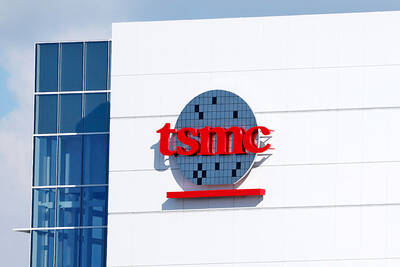Japan's Sony Corp and Germany's Qimonda AG said yesterday they have agreed to form a joint venture to design high-performance DRAM memory chips for consumer and graphic applications.
The 50-50 joint venture, to be called Qreatic Design, will be based in Tokyo and is expected to start operations by the end of this year, the companies said in a joint statement.
The joint venture is expected to start with up to 30 "specialists" from Sony and Qimonda, the companies said.
Financial terms of the joint venture agreement, subject to regulatory approvals and other closing conditions, were not disclosed.
Their partnership highlights the growing competitiveness in making DRAM, or dynamic random access memory, chips, used in personal computers.
Sony currently buys the chips from suppliers including Elpida Memory Inc. Munich-based Qimonda is an Infineon Technologies AG unit. By partnering with Sony, Qimonda secures orders from the world's second-largest maker of consumer electronics after Matsushita Electric Industrial Co.
The capital-intensive sector has forced many of the global chip makers to seek joint ventures or form strategic alliances to share technology, design and production costs.
In 2004 Qimonda rival Hynix Semiconductor Inc of South Korea formed a joint venture with STMicroelectronics NV of Geneva.
Sony, which lost ¥10 billion from its semiconductor operations last fiscal year, is reorganizing the division. Last month, the company said it's considering various options after the Nikkei newspaper reported that Sony may sell some production lines, including those that make the Cell processors that run the PlayStation 3 game consoles, to Toshiba Corp. The division posted an operating profit in the quarter ended June 30.
In February, Sony said it will scale back investments on chips and may give up manufacturing future versions of the Cell by hiring other companies to make the semiconductors.
The company may be able to afford further investments to make TVs and digital cameras after the initial public offering of Sony's financial unit raises ¥320 billion, Japan's biggest IPO this year.
Samsung Electronics Co was the largest producer of non-computer DRAMs last year, followed by Elpida, Qimonda, Micron Technology Inc and Hynix Semiconductor, researcher Gartner Dataquest said.

Real estate agent and property developer JSL Construction & Development Co (愛山林) led the average compensation rankings among companies listed on the Taiwan Stock Exchange (TWSE) last year, while contract chipmaker Taiwan Semiconductor Manufacturing Co (TSMC, 台積電) finished 14th. JSL Construction paid its employees total average compensation of NT$4.78 million (US$159,701), down 13.5 percent from a year earlier, but still ahead of the most profitable listed tech giants, including TSMC, TWSE data showed. Last year, the average compensation (which includes salary, overtime, bonuses and allowances) paid by TSMC rose 21.6 percent to reach about NT$3.33 million, lifting its ranking by 10 notches

Popular vape brands such as Geek Bar might get more expensive in the US — if you can find them at all. Shipments of vapes from China to the US ground to a near halt last month from a year ago, official data showed, hit by US President Donald Trump’s tariffs and a crackdown on unauthorized e-cigarettes in the world’s biggest market for smoking alternatives. That includes Geek Bar, a brand of flavored vapes that is not authorized to sell in the US, but which had been widely available due to porous import controls. One retailer, who asked not to be named, because

SEASONAL WEAKNESS: The combined revenue of the top 10 foundries fell 5.4%, but rush orders and China’s subsidies partially offset slowing demand Taiwan Semiconductor Manufacturing Co (TSMC, 台積電) further solidified its dominance in the global wafer foundry business in the first quarter of this year, remaining far ahead of its closest rival, Samsung Electronics Co, TrendForce Corp (集邦科技) said yesterday. TSMC posted US$25.52 billion in sales in the January-to-March period, down 5 percent from the previous quarter, but its market share rose from 67.1 percent the previous quarter to 67.6 percent, TrendForce said in a report. While smartphone-related wafer shipments declined in the first quarter due to seasonal factors, solid demand for artificial intelligence (AI) and high-performance computing (HPC) devices and urgent TV-related orders

MINERAL DIPLOMACY: The Chinese commerce ministry said it approved applications for the export of rare earths in a move that could help ease US-China trade tensions Chinese Vice Premier He Lifeng (何立峰) is today to meet a US delegation for talks in the UK, Beijing announced on Saturday amid a fragile truce in the trade dispute between the two powers. He is to visit the UK from yesterday to Friday at the invitation of the British government, the Chinese Ministry of Foreign Affairs said in a statement. He and US representatives are to cochair the first meeting of the US-China economic and trade consultation mechanism, it said. US President Donald Trump on Friday announced that a new round of trade talks with China would start in London beginning today,